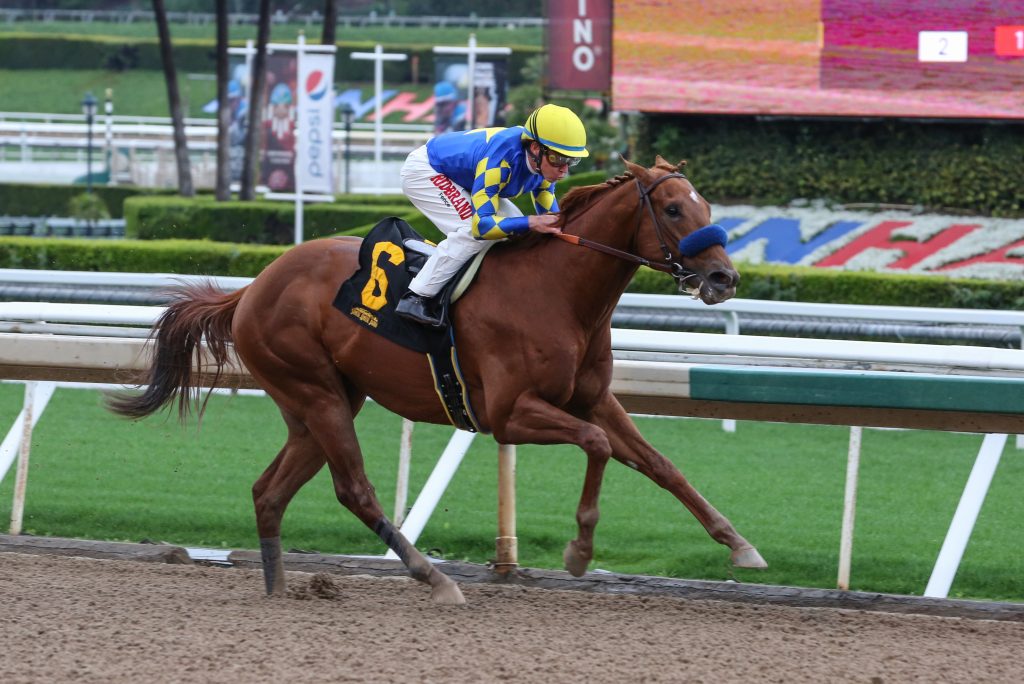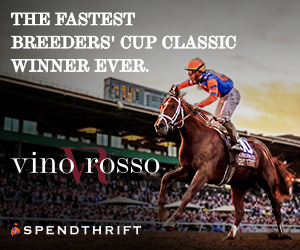
In reports by The Courier-Journal and The New York Times, news broke in May that Hall of Fame trainer Bob Baffert had two horses test positive for an illegal substance, Lidocaine, at the recent Oaklawn meet. The horses were Charlatan, 3-year-old co-champion of the Oaklawn Derby with stablemate Nadal, and Gamine, who also won on the May 2 Oaklawn racing card.
The split test has been analyzed and the results stand.
A statement was issued today from W. Craig Robertson III, counsel on the behalf of trainer Bob Baffert.
“Even though Lidocaine is a lawful, widely available therapeutic medication, it was never intentionally administered to either GAMINE or CHARLATAN. When test results indicated that trace amounts of Lidocaine were found in both horses after their respective races on May 2, Bob Baffert and his team were shocked. Leading up to May 2, both horses were healthy and worked hard to earn their victories that day.
After investigation, it is our belief that both GAMINE and CHARLATAN were unknowingly and innocently exposed to Lidocaine by one of Bob’s employees. The employee previously broke his pelvis and had been suffering from back pain over the two days leading up to May 2. As a result, he wore a Salon Pas patch on his back that he personally applied. That brand of patch contains small amounts of Lidocaine. It is believed that Lidocaine from that patch was innocently transferred from the employee’s hands to the horses through the application of tongue ties by the employee that was handling both horses leading up to May 2.
What I want to make clear are the following three points:
1. This is a case of innocent exposure and not intentional administration.
2. The levels of Lidocaine found in both GAMINE and CHARLATAN that day were extremely small – 185 picograms for GAMINE (in race 7), and 46 picograms for CHARLATAN (in race 11). A picogram is a trillionth of a gram.
3. It is our understanding that the trace amounts of Lidocaine found in both GAMINE and CHARLATAN would not have had any effect on either horse – much less a performance enhancing one. The extreme sensitivity of modern day testing can now pick up trace levels of innocent contaminants that have no effect on a horse. This is an issue that regulators of horse racing need to account for and address.
Based on these facts, we intend on defending the cases involving GAMINE and CHARLATAN before the Arkansas Racing Commission.”
Lidocaine, used as a local anesthetic, is considered a Class 2 drug by the Association of Racing Commissioners International (ARCI), and use of it carries a penalty of a 15- to 60-day suspension and a fine of $500 to $1,000 for a first offense. In the absence of mitigating circumstances, the horse would also be disqualified and forfeit the purse. Charlatan earned $300,000 for his Division one Oaklawn Derby (G1) win.
Lidocaine can be used legitimately as an injected anesthetic for suturing wounds or as a diagnostic tool to determine whether horses are sound enough to compete. The drug may also be present in as a topical anesthetic in ointments or creams used on cuts or abrasions. It is regulated because of its potential to mask lameness in an unsound horse.
Ed Martin, president of the ARCI, said in May that “the level of scrutiny shouldn’t change” between the Triple Crown and an ordinary allowance race, but he acknowledged that may not be realistic given human nature and high profiles.
“You can’t ignore it, but the last thing you want to do is cast a spell on somebody when there’s nothing there,” Martin said. “It sounds to me as if they’re in the figuring-out-what-the hell-happened phase.”
Given that controversial precedent and Baffert’s stature within the sport, Arkansas regulators expected their review process to play out more quickly and much more publicly.
Earlier this year, the Arkansas commission was compelled to change its drug testing procedures after Truesdail Laboratories had its accreditation suspended by the Racing Medication and Testing Consortium (RMTC).
Nikki Langston, spokeswoman for the Arkansas Racing Commission, told The Courier-Journal the agency in May it had no comment at that time.
“Nothing has come before the commission yet — we do not have the facts,” Alex Lieblong, the chairman of the Arkansas Racing Commission, told The New York Times. “When we get it, there will be no delaying tactics. Anything we can expedite, we will do.”
“We will not have a situation like in California, where a horse ran in the Kentucky Derby after failing a drug test,” Oaklawn Park owner Louis Cella told The Times. “That was an embarrassment to the industry. We will push to have this cleared up by the Belmont Stakes.”
As is the practice in most racing jurisdictions, trainers operating in Arkansas retain the right to have a “split” sample tested by an independent lab before an initial finding is confirmed. In the event of a positive determination, Arkansas regulations state: “The illegal administration of any drug, medication or chemical substance to any horse entered in a race … shall be punished to such an extent as the Stewards rule.”
Charlatan, the chestnut son of Speightstown out of Quiet American mare Authenticity is one of Baffert’s undefeated 3-year-olds. The colt had workouts on May 27 (4f :50.00) and June 1 (5f 1:00.80) after not being seen on the track since his Arkansas Derby win May 2.
Four days after Charlatan’s runaway victory in Division one of the Arkansas Derby, the colt’s stallion rights were sold for an undisclosed sum to Hill ‘n’ Dale Farm.
A confirmed positive in Arkansas would not preclude a horse from competing in the Triple Crown, which began this year with the Belmont Stakes on June 30, but it could cost one of the Arkansas Derby winners 100 qualifying points toward the Kentucky Derby, rescheduled for Sept. 5.
Trainer Bob Baffert said June 6 that Charlatan will miss the rescheduled Kentucky Derby this fall after being sidelined by a minor ankle issue. Baffert said that the colt has a filling, or swelling, in a front ankle. As a result, Charlatan will not be ready to race in time for the Kentucky Derby on Sept. 5, but Baffert said the Preakness on Oct. 3 is a possibility.
3-year-old Gamine is also undefeated in three starts. The daughter of Into Mischief out of Kafwain mare Peggy Jane won a $16,000 allowance optional claiming race at Oaklawn May 2. Gamine just won the Longines Acorn Stakes (G1) at Belmont June 20 with an Equibase Speed Figure of 117.
Other Baffert 3-year-old colts, Authentic (Into Mischief) and Azul Coast (Super Saver) ran in the in the Santa Anita Derby (G1) on June 6. Authentic suffered his first loss as he finished second by 2 ¾ lengths to Honor A.P. Azul Coast would finish seventh of seven.
Azul Coast won a spot in the Preakness with his victory in the El Camino Real Derby (Listed) at Golden Gate Fields in February. His only loss prior to the Santa Anita Derby was to Authentic in the Sham (G3).
Undefeated Nadal was retired with a left front lateral condylar fracture May 28. The injury was diagnosed after the 3-year-old colt worked a half-mile Thursday in :48.80 at Santa Anita Park. He had surgery inserting two screws at the equine hospital at the Southern California track. The Blame colt will likely stand at Spendthrift Farm.
Nadal had led Kentucky Derby qualifying with 150 points, while Charlatan had ranked fourth with 100 points.
Past The Wire Staff



